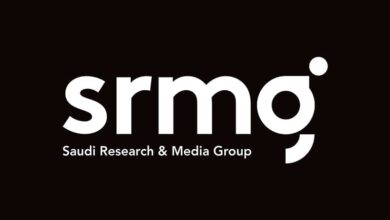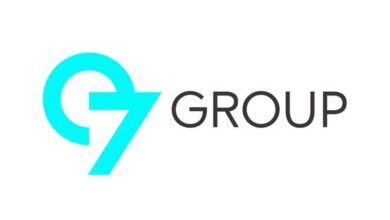Time Starts Selling Ads on Magazine Covers
The industry’s major players have until now almost entirely resisted pressure to sell cover ads, despite a strong need for new revenue in recent years. That’s partly because ads on covers violate widely-observed guidelines from the American Society of Magazine Editors, but also because most editors believed in those guidelines, which are meant to emphasize and protect editorial independence from marketers.
The Time and Sports Illustrated cover ads, which are likely to both arouse consternation and encourage others to follow, come two weeks before Time Inc. begins trading on the New York Stock Exchange as a public company, spun off from Time Warner to fend for itself.
They were originally scheduled to run earlier this month on Time’s annual Time 100 double issue, which featured Beyonce on the cover, but complications with that plan delayed them until the Time issue scheduled to reach newsstands Friday. The Sports Illustrated with the cover ads arrives next Wednesday.
A spokeswoman for Verizon said the cover ad “offered great exposure” for the brand, but declined to say more.
 For now the area devoted to the ads is very small: Subscribers may notice a Verizon logo in the mailing label area, next to the words “For Best Results Use Verizon” and a page number for a traditional ad. Newsstand copies will print the ad by the bar code, although there won’t even be room there for the page number of the interior ad, according to a Time Inc. spokeswoman.
For now the area devoted to the ads is very small: Subscribers may notice a Verizon logo in the mailing label area, next to the words “For Best Results Use Verizon” and a page number for a traditional ad. Newsstand copies will print the ad by the bar code, although there won’t even be room there for the page number of the interior ad, according to a Time Inc. spokeswoman.
But Time Inc. has pitched media buyers on ads that would run across the bottom of its magazines’ covers, according to people who have seen mockups. A Time Inc. spokeswoman declined to comment.
The company is also shopping around a “native placement” ad for the table of contents, a Time Inc. staffer said. As editorial territory, the table of contents is also usually considered off-limits to ads.
Other magazines have experimented with ads that involved covers to varying degrees. Conde Nast, for instance, attached full-page promotions for Microsoft’s Windows 8 to covers of 14 titles in 2012. The companyclaimed they weren’t paid ads for Windows 8, but unpaid promos for Windows 8 content that were merely “coordinated” with a massive paid campaign.
And Scholastic Parent & Child began selling ads directly on its covers in 2009, promoting brands such as Juicy Juice, SunnyD Smoothies and PediaSure. But a publishing company of Time Inc.’s size and stature hasn’t previously sold ads directly on its covers.
“You can either say this is a groundbreaking decision to put ads on covers after 91 years in the business or you can say this is a relatively modest reference that catches up to what’s going on in the industry,” said Norman Pearlstine, Time Inc.’s chief content officer. “What we didn’t want to do is to be perceived that we trying to hide from it.”
Time Editor Nancy Gibbs and Sports Illustrated Editor Paul Fichtenbaum declined to comment.
The new ad units come as Time Inc. makes its final preparations to separate from Time Warner. Executives including Mr. Pearlstine and Time Inc. CEO Joe Ripp spent part of this week on a road show to drum up interest among investors. Their pitch involves showing that Time Inc. — which has seen revenue declines consistent with the print industry — is willing to experiment with new advertising products.
“We want to be entrepreneurial,” Mr. Pearlstine said. “We want to be creative. We want to do things that make sense for all of our stakeholders, including readers, viewers in digital space, advertisers and others.”
Jed Hartman, group publisher of news and business at Time Inc., declined to say how much Verizon paid for the ad. “The cover tout alone carries a cost, plus there’s a requirement of an ad page or custom content page in that issue, plus this is only brought to our largest advertisers, so it’s not available to everyone,” he said.
Verizon’s media agency ZenithOptimedia Group declined to comment.
Cover ads will likely be listed on Time Inc. rate cards, which give the stated cost of various ads in the company’s magazines, according to Mr. Hartman.
First-quarter ad revenue at Time Inc. was essentially flat at $390 million, with overall revenue climbing 1% from the quarter a year prior to $745 million. But the growth stemmed from its acquisition last year of American ExpressPublishing, which includes the luxury titles Travel + Leisure and Food & Wine. Minus the additional cash from those titles, revenue would have fallen 5%, with ad sales down 7%.
The American Society of Magazine Editors, also known as ASME, lists as its first guideline: “Don’t Print Ads on Covers.” Covers are “the editor and publisher’s brand statement,” the guidelines continue. “Advertisements should not be printed directly on the cover or spine.”
Earlier this year, Lexus sponsored the spine of the the Sports Illustrated Swimsuit Issue, which called out the page number of the automaker’s ad in the issue. Time Inc. is pitching marketers on running similar ads on the spines of its other magazines, according to a Time Inc. staffer.
Breaking ASME’s guidelines can lead the society to exclude magazines from consideration for the National Magazine Awards, which it sponsors along with the Columbia University Graduate School of Journalism.
Mr. Pearlstine, who recently joined the ASME board, acknowledged that the cover ads defy ASME guidelines, but said they are also consistent with the editorial society’s four basic principles, which are listed above the guidelines themselves: “Every reader is entitled to fair and accurate news and information; the value of magazines to advertisers depends on reader trust; the difference between editorial content and marketing messages must be transparent; editorial integrity must not be compromised by advertiser influence.”
“If we’re not at variance with the principles, then it’s worth having a discussion of whether the guidelines are relevant and still appropriate,” Mr. Pearlstine said.
“An editor ought to be thought of as a marketer for what we stand for — our values and our products,” he added.
ASME CEO Sid Holt said he was shown the cover ads last week. “This will be something I’m sure the board and other ASME members will want to look at more closely in the coming months,” he said in an email.
A former Time Inc. editor said the ads mark the “continuing erosion of Time Inc.’s standards.”
Last October Time Inc. told its editors to report to executives on the business side, eliminated its longstanding position of a company-wide editor-in-chief, accepted the resignation of Editor-in-Chief Martha Nelson and hired Mr. Pearlstine for a modified version of the role. Under the new reporting structure, editors can bring their concerns to Mr. Pearlstine, himself a former Time Inc. editor-in-chief.
Ms. Nelson declined to comment on the cover ads.
“I can’t say every editor is going to share my enthusiasm for this,” Mr. Pearlstine said. “The term ‘slippery slope’ is something that is going to be thrown around. Among the Time alumni society you’ll find people who would be concerned that this is yet another example of a deviation of the past.”
“But if you go back to the fundamental principles of ASME and of this organization,” Mr. Pearlstine added, “I am hard-pressed to understand how this violates those principles.”
Five Reactions to Time Inc.’s New Cover Ads
The world might be festooned with ads, but magazine covers had remained largely ad-free until this week, when a tiny Verizon Wireless ad appeared on the cover of Time magazine. The same ad is scheduled to land on the cover of Sports Illustrated on Wednesday.
Consumer magazines have for years flirted with putting ads on their covers, though when it’s happened, the ads have usually shown up as cover wraps, in which an ad literally wraps around the cover, or a sticker that can be removed. But publishers have almost always avoided actually putting ads on their covers, because the real estate is thought of as the editor’s first and best statement to readers, one that should be presented without interference from an ad. The influential American Society of Magazine Editors also advises its members to avoid the practice.
But the line seems to have been breached. And even though Verizon’s ad is tiny enough that many readers might miss it, Time and Sports Illustrated’s parent company, Time Inc., is shopping around ads that appear across the bottom of its other magazines, like Fortune and Money, according to people who have seen mockups of the ad.
Advertisers can safely be considered supportive of the idea, but the rest of the media business is still grappling with the idea. Here are reactions from five media figures:
“I think the cover is the latest frontier for exploration,” said Joanna Coles, editor-in-chief of Hearst’s Cosmopolitan, whose May issue included a peel-away cover for subscribers that was part of an ad buy for L’Oreal. “We’ll see more magazines exploring how to use their cover,” Ms. Coles added. “We wouldn’t put a brand on the actual cover, but we would do a wrap. Each case should be taken individually to determine what works best for the reader.”
“The truth is I don’t think it’s a big deal,” said Victor Navasky, the George Delacorte Professor of Magazine Journalism at Columbia University’s Graduate School of Journalism, where he directs the Delacorte Center of Magazines and chairs the Columbia Journalism Review. He’s also the former editor and publisher of The Nation. “I think every publication has the right to decide how it uses its cover. I’m not worried about it being a slippery slope.”
“To me, it is much more offensive to see ads pop up in the middle of stories that I’m reading on the web that to see part of a cover devoted to an ad,” he added.
Andrew Essex, vice chairman at creative agency Droga5, questions why Tom Cruise appearing on the cover of a magazine is not ad for his latest movie. “Let’s not oversell the purity of the church,” said Mr. Essex, himself a former executive at The New Yorker, Details and Entertainment Weekly, in an email. “As long as there is no overt shilling, and the quality of the edit isn’t ever compromised, the industry should by all means experiment and push the envelope. I think covers, many of which have become formulaic, should be shaken up as as a matter of evolution.”
Jim Impoco, editor-in-chief of Newsweek, said a magazine’s cover is the closest thing to art in the media world, but “someone’s got to pay the rent.” Marketers have asked about running ads on the spine of Newsweek, according to Mr. Impoco. And it’s a tactic Sports Illustrated adopted earlier this year when it put a Lexus ad on the spine of its Swimsuit Issue. “I don’t have any objection to that,” Mr. Impoco said in an email. “As for the cover, it’s not solely my decision. If we could avoid it, that would be great.”
“Making a successful magazine cover is enough of a challenge,” said Adam Rapoport, editor-in-chief of Conde Nast’s Bon Appetit. “The idea of figuring out how to best incorporate an ad only complicates the process.” Mr. Rapoport said he can imagine certain magazines, particularly weeklies, allowing ads on their covers without repercussions, just as newspapers like The New York Times and Financial Times have done. “But monthly magazines are different,” he said. “They’re supposed to be iconic and beautiful. Newspapers are important but ultimately disposable.”
Source: AdvertisingAge





